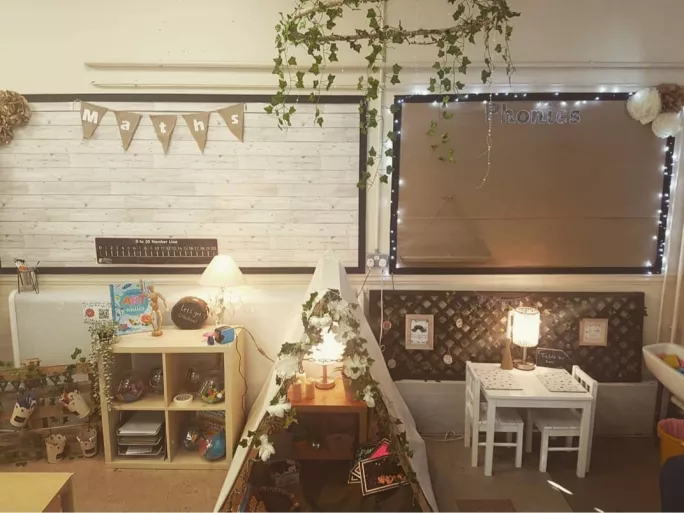Hessian and foliage used to be wedding venue staples, but now they seem to be gracing every classroom on the internet.
Classrooms used to be bright and colourful, brimming with rainbow-coloured storage and striking displays, but now it’s all wicker baskets and ivory.
Where has this new natural/neutral trend come from? And is it actually beneficial to our pupils’ education?
I’ve always been a fan of all things bright and beautiful, packing as many resources as I could onto my walls (and dangling from my ceiling) to support and engage my pupils. I was often told how fabulous it was.
Sensory overload
Until one day, an educational psychologist suggested that my classroom could be having the opposite effect of what I was aiming to achieve, and bringing sensory overload to my pupils.
It took a long time for me to see how right he was. After being inspired by so many photos of neutral spaces and reading lots of research highlighting the benefits of neutral colours for pupils, I have phased out the bright plastics and replaced them with natural décor, bringing a glimpse of the outdoors into the classroom.
And I’ve never looked back. My pupils are now much calmer, less distracted and more purposeful in their learning.
But how is it possible to move away from plastics when we’ll all be on a cleaning frenzy come September?
Here are some top tips that might help if you would like to adopt a more natural inspired classroom in September:
1. Dettol cleaning sprays or Zoflora mixed with water in a spray bottle are easy alternatives to clean wooden resources such as tree stumps that can’t be washed.
2. Some wicker baskets are coated in varnish, making them as easy to wipe clean as plastic boxes. Most wooden products, such as tree slices, can also be coated in varnish to make them wipeable.
3. Wooden and stone-effect wallpaper or neutral backing paper create the same atmosphere as hessian-backed displays, without the fabric texture which can harbour germs.
4. Clear or cream plastic boxes and baskets are a good alternative for storing resources if you would like to stick to plastic for the ease of cleaning, but want to move away from loud colours.
5. Soft furnishings can be sprayed with disinfectant throughout the day and washed regularly.
6. Turn off the fluorescent lighting and have lamps around the classroom instead. This has had the biggest impact in making our classroom feel cosier and calmer.
7. Resources can be put into quarantine and rotated so they are not touched by as many pupils.
Ultimately it will depend on your SLT and their interpretation of the government’s guidance around the dos and don’ts for setting up your classroom.
But, hopefully, many more schools will be able to create calmer spaces to help our pupils feel safe and secure when they return to our classrooms in September.
Katie Jenkins is a key stage 1 teacher and phonics lead



